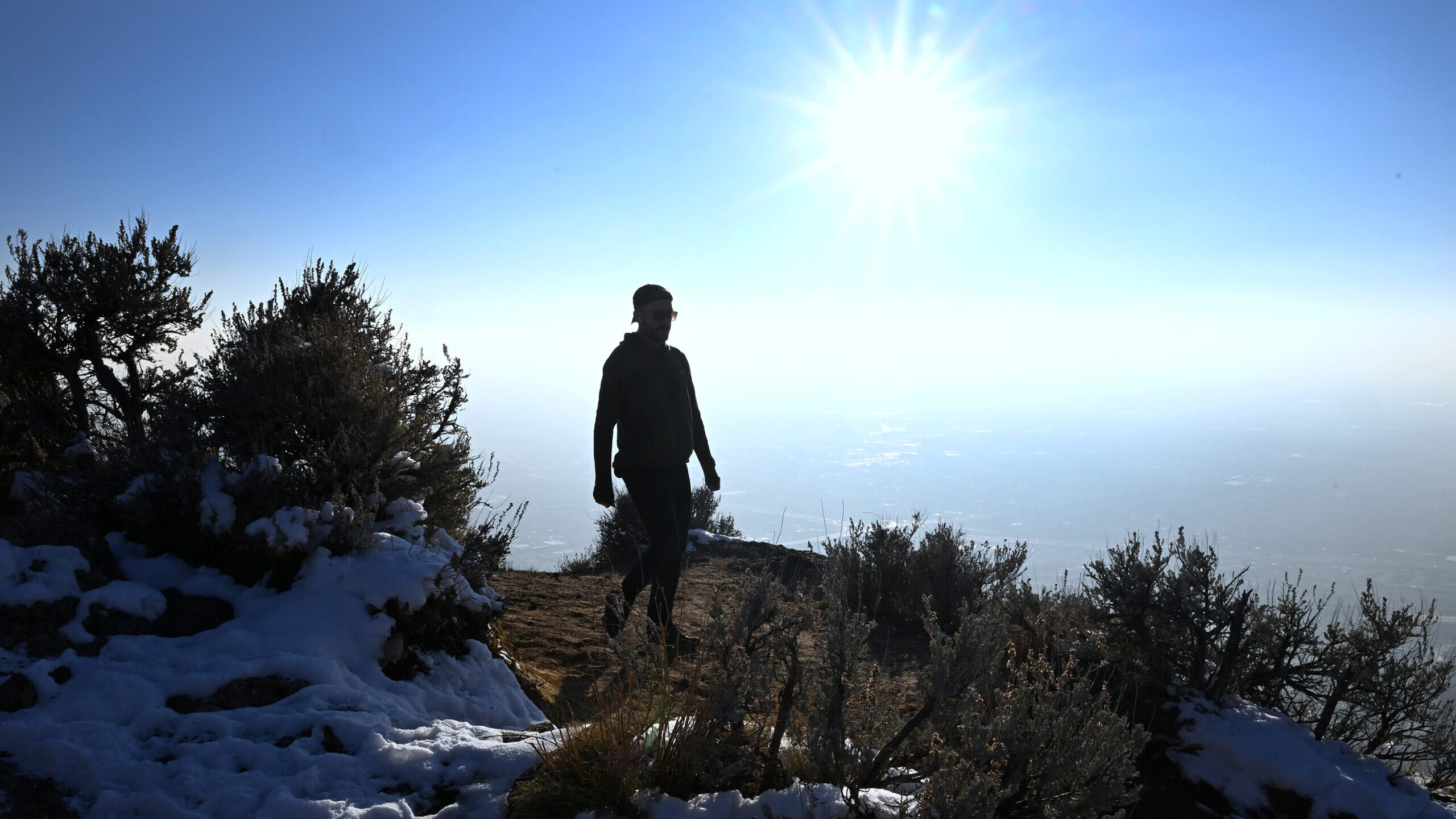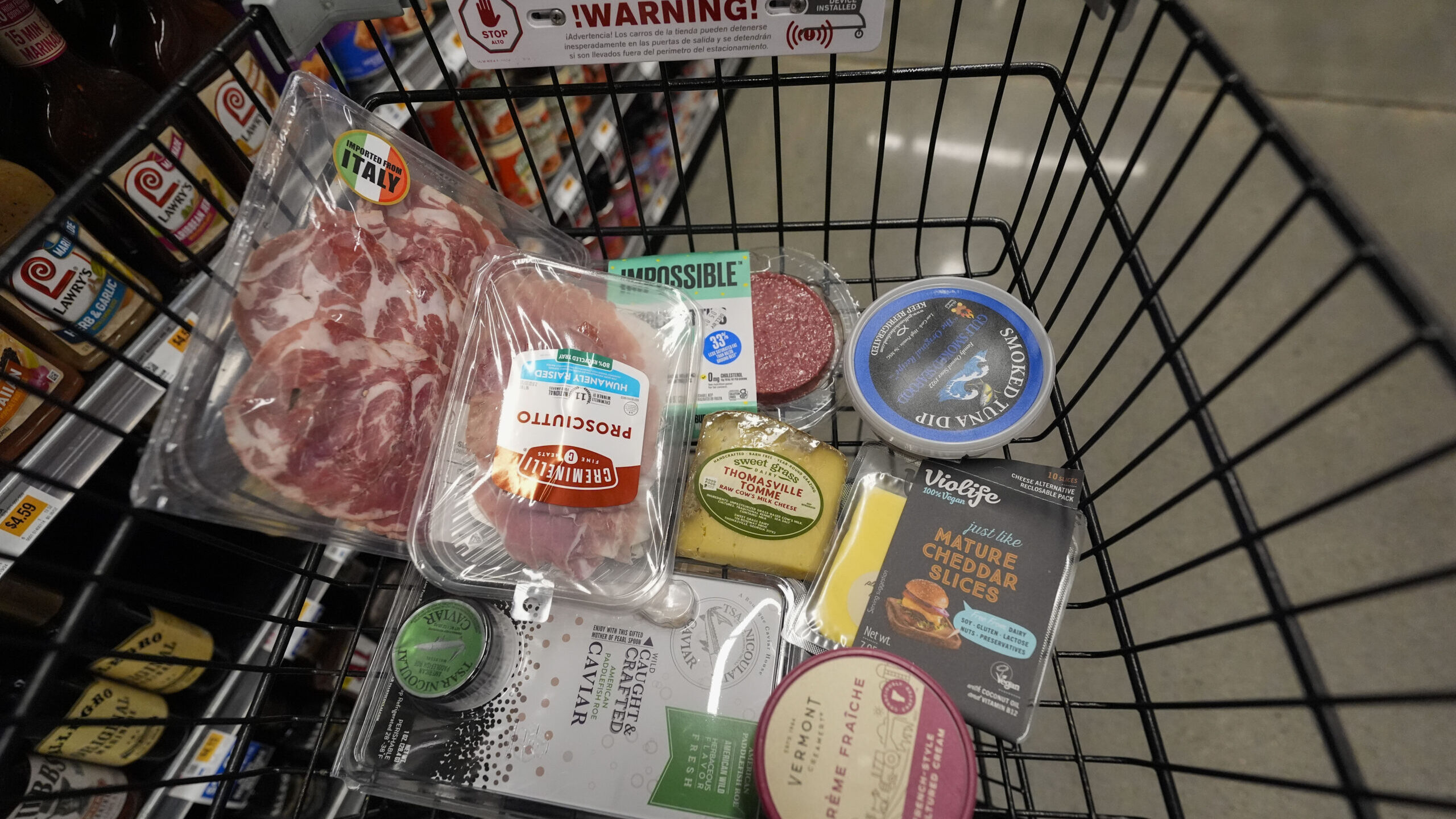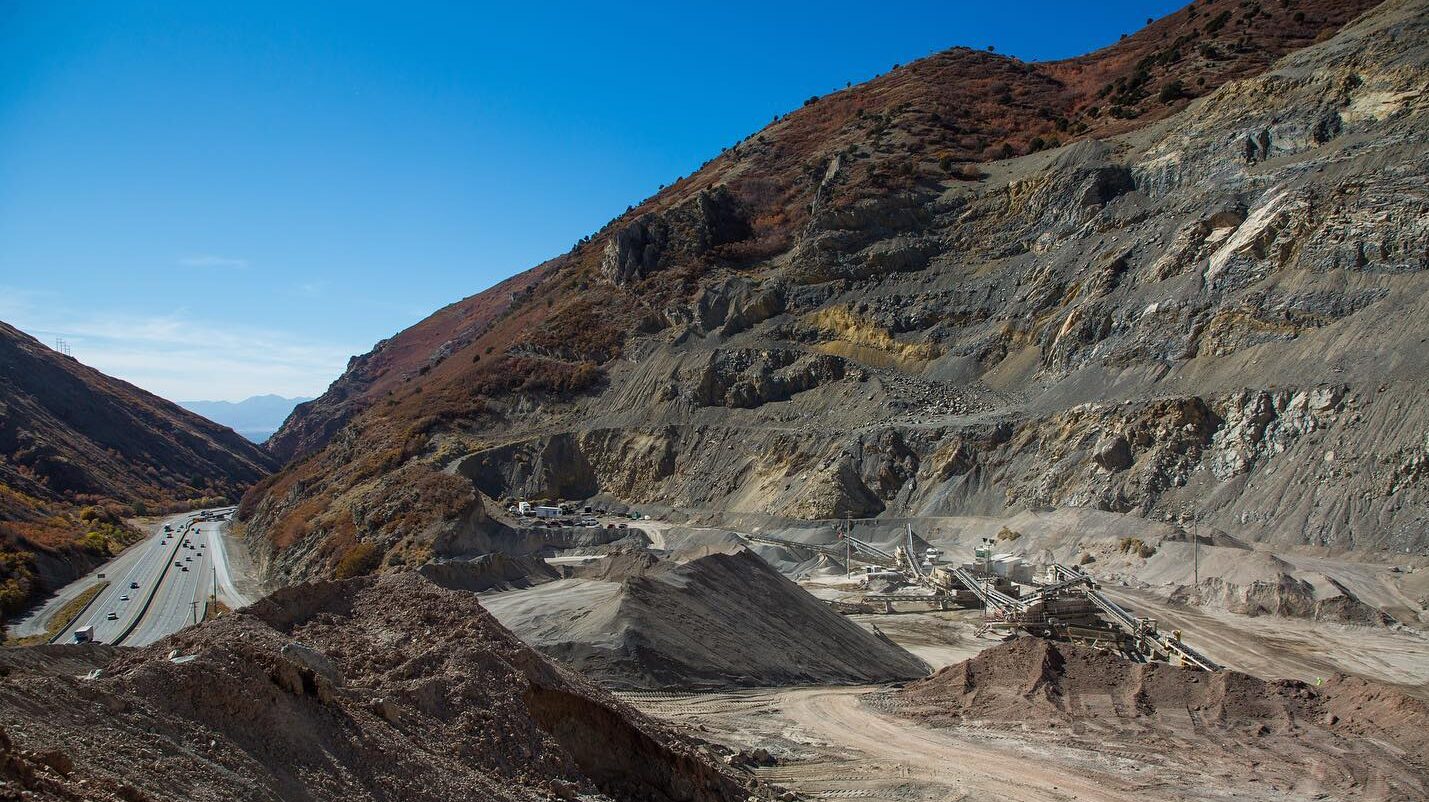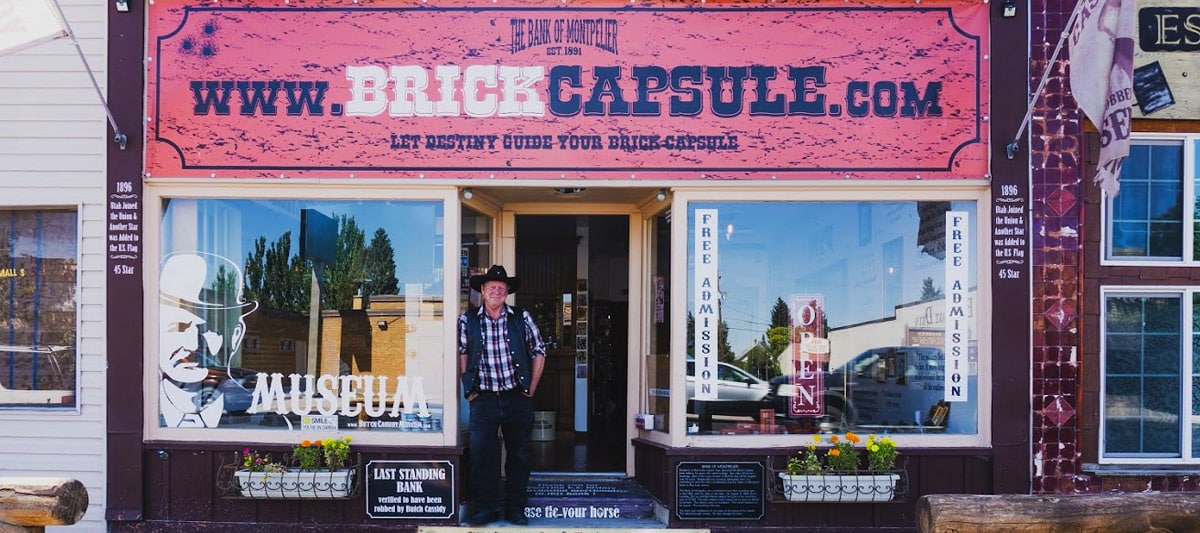What oily, sticky tar seeps can teach us about saving Great Salt Lake
Apr 22, 2023, 2:23 PM | Updated: Apr 24, 2023, 10:01 am
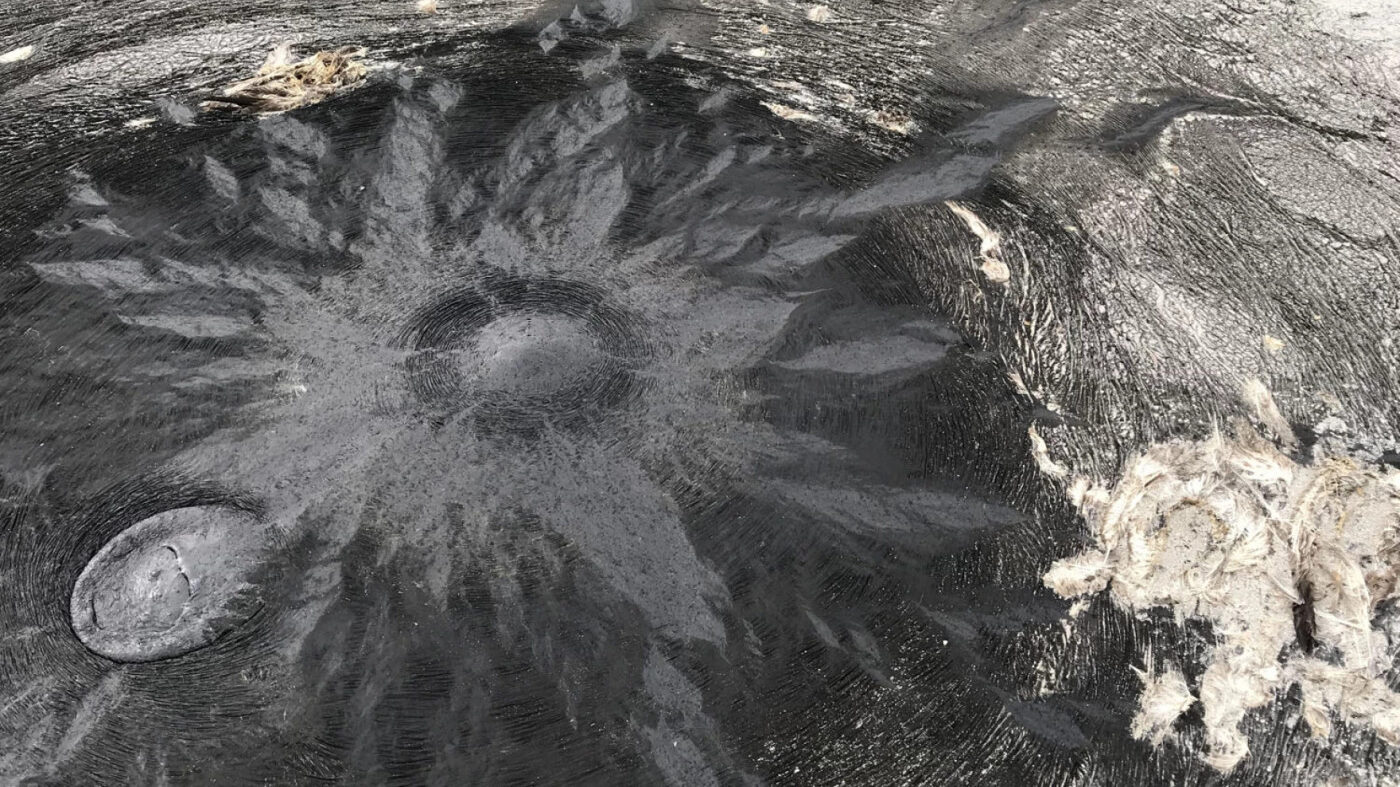
Tar seeps on the shore of the great salt lake become more visible as the water level drops. they can form beautiful patterns as they ooze and freeze. (courtesy gretchen henderson)
(courtesy gretchen henderson)
This article is published through the Great Salt Lake Collaborative, a solutions journalism initiative that partners news, education, and media organizations to help inform people about the history and the plight of the Great Salt Lake.
SALT LAKE CITY — Near Spiral Jetty on the northeast shore of Great Salt Lake, there is a phenomenon known as tar seeps. Sticky, black oil bubbles up to the dry lake bed and entraps unsuspecting birds and small mammals. These seeps have become more exposed as the lake shrinks.
“They ooze up from tectonic fractures beneath the earth’s surface and spread out like sticky flypaper,” said Gretchen Henderson, author of the forthcoming book “Life in the Tar Seeps: A Spiraling Ecology from a Dying Sea.”
“During summer, they’re very sticky. You want to stay away from them. But then in winter, they freeze into these beautiful patterns.”
She first fell in love with the Great Salt Lake when she was a University of Utah visiting professor of environmental humanities.
Henderson, who is now a senior lecturer at the University of Texas at Austin, warns people who visit to be careful as they walk around the seeps. Animals that get stuck in the tar can become fossilized over time.
“[The tar seeps] are a natural phenomenon, but they really are a barometer for climate change,” Henderson said. “They tell time in reverse.”
Henderson uses the tar seeps as a metaphor for how, like these birds, society can become stuck without realizing it.
These kinds of connections are an important part of saving the lake, Henderson said.
Throughout the book, she personifies the lake and relates her own life to the tar seeps. She was once hit by a car in a crosswalk — a surface of man-made asphalt that she likens to the natural asphalt of the tar seeps.
Through that personal connection, she developed a relationship with the lake.
“All the different ways that we impact the earth and engage with the earth came to life in this remote place,” she said.
With misunderstanding and denial around climate change, Henderson said people need to find their own links to the lake.
“Stories have that capability to not only speak to the mind, but speak to the heart and build empathy, as we are able to relate to the Great Salt Lake as a living body of water.”
Henderson spoke at the University of Utah Tuesday, April 18 at 2 p.m. as a guest of the Tanner Humanities Center.
This interview has been edited for length and clarity.
Ciara Hulet: You talked about these tar seeps as beautiful. I don’t think I would consider them beautiful. Is that the kind of thinking you feel like people need to better connect with the lake and want to save it?
Gretchen Henderson: Absolutely. Sometimes the overlooked places — what could be called the disabled places, the wounded places — have just as much value and need that same kind of care and attention. Sometimes we as a human species need to turn up the volume of our own multi-sensory engagement and also think about the inherited ways of seeing [the Great Salt Lake as] stinky and ugly. But if we look a little bit closer and try to see it on its own terms, we may actually get a different sense.
CH: Do you really think “love” could save the lake?
GH: I think it’s a question of what does that love do in a sense of transformative action. How does that work its way into our everyday engagement of use of not only water, but natural resources more generally? And thinking in terms of respect and reciprocity, how can that turn into transformative collective action for how we steward the planet, especially [in] challenging places that aren’t as easy to love?
CH: How can someone who hasn’t really fallen in love with the lake start to develop a relationship with it?
GH: There are a lot of on-the-ground [opportunities], either field trips out to Great Salt Lake through the Great Salt Lake Institute and other collectives, and through the Utah Museum of Fine Arts to visit Spiral Jetty. But do it in a way that’s not about eco-recreation in terms of what we can take or what we can receive, but also how we can pay closer attention to the lake on its own terms.


